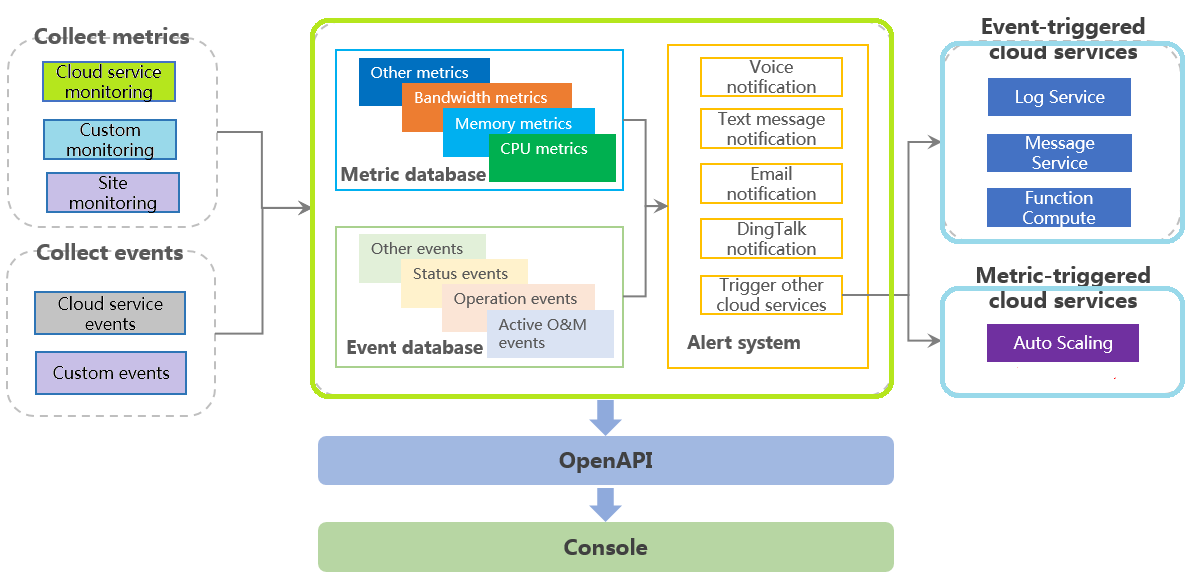By Shantanu Kaushik
Monitoring applications is one of the most important tasks within the software deployment counterpart of the SDLC. Traditionally, monitoring was a practice to predict failures and provide possible solutions to avert them. Now, monitoring plays an important part in service continuation while collecting different metrics to facilitate targeted and featureful upgrades.
Lately, newer and more refined ways of monitoring an application or service have surfaced. These include the usage of Artificial Intelligence (AI) and big data analytics to collect data and extract precise information from it. This enables a better CI/CD cycle with a solution-centric approach.
In this article, we will discuss the monitoring and observability of applications and services. We will also introduce Alibaba Cloud Application Real-Time Monitoring Service (ARMS).
Monitoring is highly useful to maintain system stability. The basic understanding of resources and modules using those resources lets us understand how things are working. With cloud-native architecture and platforms like hybrid cloud and multi-cloud, most organizations turn towards microservices architecture to split bigger services into smaller units that work together. These loosely coupled services are handy for maintenance and interoperability since they are not dependent on each other for system functionality.
Microservices provide a seamless approach for application development and quick O&M, but the system becomes complex with all of its working parts. Monitoring provides crucial data and metrics to quickly and efficiently resolve issues and facilitate quick repair times during any failures. The first rule of thumb when it comes to detecting and working with failures is to understand what is not working and why is it not working.
Monitoring lets you predict failures by collecting multiple metrics system-wide. With monitoring, you have the facility to generate alerts and suggest possible resolutions in case of system failure. However, the complexity of the system increases tenfold with distributed systems like microservices.
Monitoring is essential for running any environment or practice like microservices and DevOps. It reflects the overall health of your system and provides actionable data. Alibaba Cloud is a front runner in the research and development of industry-centric solutions, such as CloudMonitor.

Alibaba Cloud CloudMonitor is a service that monitors all Alibaba Cloud resources and applications. It is also an enterprise solution that monitors your IT infrastructure and generates Internet quality reports based on events and metrics collection. CloudMonitor is an essential solution to improve system availability and reduce the O&M costs of IT infrastructure.
Alibaba CloudMonitor can observe thousands of instances panning multiple services and supports a wide variety of service monitoring scenarios. If you have deployed using Alibaba Cloud Elastic Compute Service (ECS), CloudMonitor allows you to detect the service availability and configure the total service scenario to collect valuable metrics for better optimization.
Observability observes a system to understand the internal working state and the output to calculate system efficiency. Observability complements monitoring by enabling more control over the environment to gather information about the system and its intricacies. Observability highlights some of the most important aspects of your system to help you focus on them.
Observability can help clear out questions about performance issues or unexpected system behavior. If your microservice fails, maintaining observability lets the monitoring service pinpoint the exact issue that led to the failure.
Observability answers important questions and helps the O&M team quickly resolve any gaps between service continuance. You can find out the process of microservice and when the failure occurred.
Observability calculates the internal state (or health) of any system. In a large-scale distributed enterprise environment, different services operate through multiple layers of application configurations and virtual nodes, which makes it challenging to apply controls to a system. Here, observability and monitoring come together.
Monitoring sends out an alert for you when there is an issue and something is not working correctly. Observability provides answers to why the issue occurred or why something is not working correctly. Monitoring and observability complement each other and are the crucial parts of a bigger O&M process that keeps your system healthy and functional.
An effective detection, reporting, and recovery system can only function properly if all the aspects of monitoring and observability work together seamlessly. During the testing phase, applications could fail for many reasons. The process anticipates the reasons, so they do not impose a threat. However, when an application or service is deployed and expected to function without any hiccups, it creates unwanted complexity for the deployment team and the O&M personnel. Imagine swinging in a dark room. The combination of monitoring and observability shows you the light when it is needed most.
The latest trend in monitoring and metrics collection examines the collected data using big data technologies and AI-based programs to extract valuable input. Similarly, implementing better solutions and formulating strategies based on the collected data and metrics is vital to maintaining business continuity and business intelligence in the long run.
Alibaba Cloud has decades of experience with developing solutions that cater to industry-specific needs. In Part 2 of this article series, we will discuss Alibaba Cloud ARMS and the best practices to follow when working with metrics and collection monitoring data.
How to Set up Global Accelerator with Source IP Address Persistence to Accelerate Your Application
Application Monitoring and Observability – Part 2: Performance Monitoring

2,593 posts | 790 followers
FollowAlibaba Clouder - March 9, 2021
Alibaba Clouder - March 9, 2021
Alibaba Clouder - March 8, 2021
Alibaba Developer - January 13, 2020
Alibaba Clouder - December 11, 2020
Neel_Shah - December 25, 2025

2,593 posts | 790 followers
Follow Microservices Engine (MSE)
Microservices Engine (MSE)
MSE provides a fully managed registration and configuration center, and gateway and microservices governance capabilities.
Learn More DevOps Solution
DevOps Solution
Accelerate software development and delivery by integrating DevOps with the cloud
Learn More Alibaba Cloud Flow
Alibaba Cloud Flow
An enterprise-level continuous delivery tool.
Learn More ACK One
ACK One
Provides a control plane to allow users to manage Kubernetes clusters that run based on different infrastructure resources
Learn MoreMore Posts by Alibaba Clouder